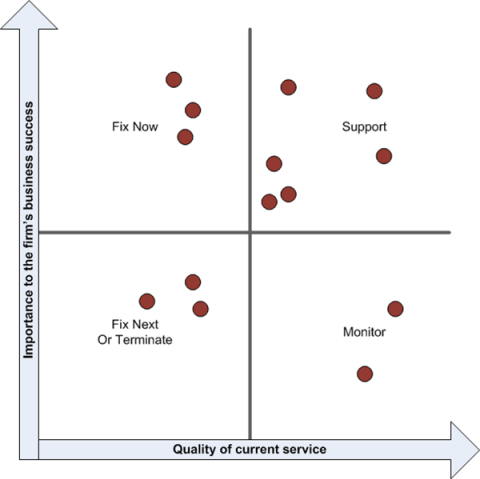As technology consultants to law firms, we often participate in conversations between IT management and firm management. Not surprisingly, IT costs are often on the agenda. Over many years, we have learned that the most successful conversations-the ones in which common understanding is reached and useful decisions are made-are built upon a handful of simple ideas.
Think about goals. Effective information technology is: focused on strategically important activities to which computing adds high value; and, of high technical quality and cost-effective. If the discussion about Project X doesn’t look to those goals, start again.
What firm leaders should expect most of IT leaders is not technical details, or even cost details, but a hierarchy of returns: effective communications; transparency; predictability and consistency in operations and costs; economy and efficiency; and, at the top, of course, business value.
Law firm IT budgets are often a muddle of numbers. They should be organized not by system or software but by service-not what the firm is buying, but what it is getting. They should include both capital and operating expenses, again by service or function. Capex is different from opex only in timing. Every capex creates an opex-we bought it, now we need to run it. Telecoms, operating and staff costs usually exceed capex purchase costs by a long dollar.
IT budgets plotted over time tend to be roller coaster curves. They should be flattened out-unless the firm is growing in huge leaps, costs should be managed to be relatively constant from year to year. That avoids surprises and anxiety for the partners, and allows effective planning. Think about financing via loan and lease, and plan to stage work over a long period. Don’t think, “I’ll do X and Y this year, then do nothing for five years.” It’s not cheaper in the long run, and service can’t be consistent.
Think about IT projects in logical chunks. No one way to slice the apple is “correct,” and you will likely need different views for different purposes. One starting point is The Stack: infrastructure; operations; the applications platform; core applications; and practice applications.

Several other approaches to slicing the apple are illustrated in the attached presentation, from a talk to the most recent Canadian Bar Association Law Firm Leadership Conference. In one way or another, all the approaches are intended to elicit discussion of the firm’s business goals and how IT can serve those goals. For example, Richard Susskind’s famed Grid and more recent Spectrum of Evolution are used to organize thinking about linking IT and business strategy.
Another approach focuses on what’s broken and what’s not. In this graph, we prioritize potential projects by plotting them on two axes: importance to the firm’s business; and quality of current service.
This, like the other approaches, is not universally correct. It is simply useful, one way to guide conversation away from technical trivia to strategic impact.
